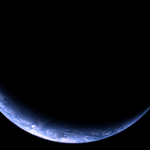 Technology
Technology  Technology
Technology  Humans
Humans 10 Everyday Human Behaviors That Are Actually Survival Instincts
 Animals
Animals 10 Animals That Humiliated and Harmed Historical Leaders
 History
History 10 Most Influential Protests in Modern History
 Creepy
Creepy 10 More Representations of Death from Myth, Legend, and Folktale
 Technology
Technology 10 Scientific Breakthroughs of 2025 That’ll Change Everything
 Our World
Our World 10 Ways Icelandic Culture Makes Other Countries Look Boring
 Misconceptions
Misconceptions 10 Common Misconceptions About the Victorian Era
 Mysteries
Mysteries 10 Strange Unexplained Mysteries of 2025
 Miscellaneous
Miscellaneous 10 of History’s Most Bell-Ringing Finishing Moves
 Technology
Technology Top 10 Everyday Tech Buzzwords That Hide a Darker Past
 Humans
Humans 10 Everyday Human Behaviors That Are Actually Survival Instincts
 Animals
Animals 10 Animals That Humiliated and Harmed Historical Leaders
Who's Behind Listverse?

Jamie Frater
Head Editor
Jamie founded Listverse due to an insatiable desire to share fascinating, obscure, and bizarre facts. He has been a guest speaker on numerous national radio and television stations and is a five time published author.
More About Us History
History 10 Most Influential Protests in Modern History
 Creepy
Creepy 10 More Representations of Death from Myth, Legend, and Folktale
 Technology
Technology 10 Scientific Breakthroughs of 2025 That’ll Change Everything
 Our World
Our World 10 Ways Icelandic Culture Makes Other Countries Look Boring
 Misconceptions
Misconceptions 10 Common Misconceptions About the Victorian Era
 Mysteries
Mysteries 10 Strange Unexplained Mysteries of 2025
 Miscellaneous
Miscellaneous 10 of History’s Most Bell-Ringing Finishing Moves
10 Incredible Firsts In The Evolution Of Life On Earth
In order to attain the awe-inspiring diversity of life on this planet, nature had to overcome numerous obstacles over billions of years of evolution. New environments had to be conquered; new forms had be created to exploit newly available resources. Since man first began to look back through the long history of the natural world via paleontology and geology, we’ve uncovered some of the turning points in the development of life on Earth.
10The Earliest Humans
The Omo Remains

Of course, you can trace humanity’s family tree back a long way. But who were the earliest modern humans, like you and the people you know? Well, Omo I and II might just hold the answers. The two partial skulls, discovered in Ethiopia around 1967, were recently confirmed to be an astonishing 195,000 years old, making them the earliest known anatomically modern humans. (There actually is some debate around Omo II, but Omo I is agreed to be a fully modern human.) In fact, scientists now think that Homo sapiens only evolved around 200,000 years ago, making it likely that the Omo pair were among the first true humans ever to walk the Earth.
So what are the implications of the two skulls? Well, aside from confirming humanity’s emergence in Africa, they’ve deepened one of the great mysteries of human evolution. Evidence of cultural traits—like musical instruments, needles, and ornaments—only dates back to around 50,000 years ago. Complex tools like harpoons also appear after that date, although crude stone implements date back much further. So, if entirely modern humans were roaming the land 200,000 years ago, why did it take them 150,000 years to develop anything resembling culture?
9The Earliest Bird
Protoavis
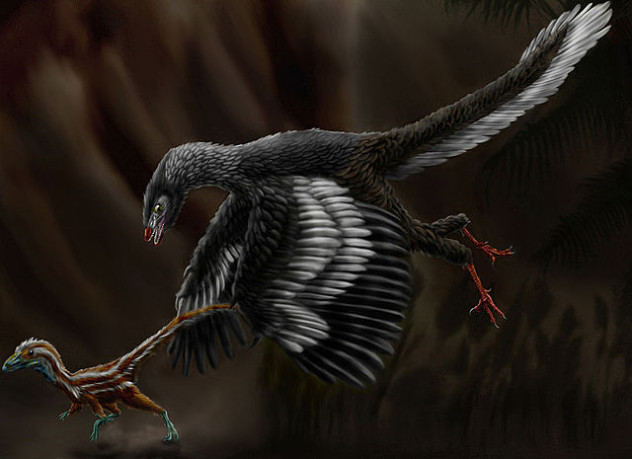
We now know that birds evolved from dinosaurs, and that many dinosaurs were actually covered in feathers. As a result, the question “Which was the earliest bird” can seem more like “When do we stop considering a creature a dinosaur and start calling it a bird?” For a long time, paleontologists drew the line at creatures like Archaeopteryx (pictured) and Confuciusornis, small animals covered in feathers and capable of flying, as well as climbing trees and running. We also know that Confuciusornis had a genuine beak, which gives it an advantage over its rivals for the position of earliest true bird.
However, there is an even older candidate for the title of first bird. Protoavis lived around 220 million years ago, at least 80 million years before its nearest rival. The fossil was found in Texas by paleontologist Sankar Chatterjee, who argues that it is even closer to modern birds than Archaeopteryx. If this is true, and Protoavis is the oldest known bird, it would potentially rewrite our entire understanding of avian evolution. Currently, the consensus is that birds evolved from coelurosaurian dinosaurs. But Protoavis is easily as old as the first coelurosaurians, making such a scenario impossible. If Protoavis is a bird, then birds must have come from somewhere else.
Don’t rewrite the textbooks just yet, though, because the identification of Protoavis as a bird has proven enormously controversial. The fossil was not in good condition when Chatterjee found it, leading many paleontologists to suggest it’s actually a mixture of bone fragments from two or more species, which an overeager Chatterjee pieced together into a plausible skeleton. Others simply point out that there’s no reason to believe Protoavis is the ancestor of today’s birds. Instead, convergent evolution might simply have resulted in two unrelated species sharing a similar design.
8The First Species To Walk On Land
Tiktaalik And Pneumodesmus
Part fish, part frog, and part alligator, Tiktaalik was the platypus of the Devonian, splashing in the shallows some 375 million years ago. Discovered in Canada in 2004, the species is considered to be an important transitional link between aquatic vertebrates and the very first land animals. Among other adaptations, Tiktaalik boasted ribs capable of supporting its body, lungs, a movable neck, and eyes on the top of its head like a crocodile. It also boasted proto-legs, halfway evolved from fins, that would have allowed it to push itself along riverbeds. However, Tiktaalik‘s “legs” probably didn’t have the range of motion required to truly walk on land. At best, it might have been able to briefly scramble around on mud flats. Otherwise, it probably remained in the shallows.
But while vertebrates like Tiktaalik struggled to make the transfer to land, they had actually been beaten to the punch by a species of millipede known as Pneumodesmus, which lived some 428 million years ago. At just 1 centimeter (0.4 in) in length, the tiny myriapod wasn’t much to look at, but Pneumodesmus was the first creature we know of to actually live on land. That also makes it the oldest air-breathing creature we know of, boasting tiny breathing openings known as spiracles on the outside of its body. As such, Pneumodesmus must be considered one of nature’s most successful experiments, paving the way for all the land animals to come.
7The Earliest True Reptile
Hylonomus Lyelli
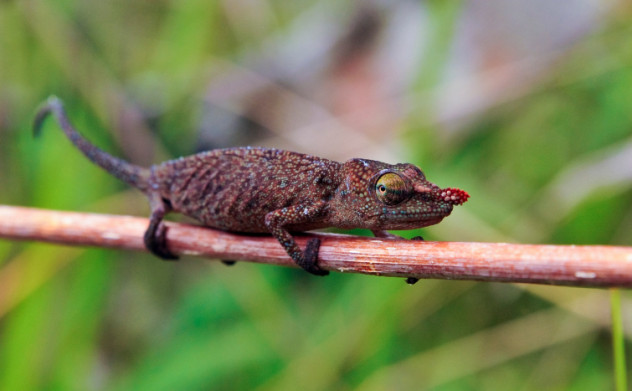
Reptiles were the first vertebrates to become completely capable of living on land, even reproducing outside of the water. That makes them pretty awesome, and the tiny critter known as Hylonomus lyelli might just be the most awesome of them all. The lizard-like creature, which measured just 20 centimeters (8 in) in length, is currently the oldest undisputed species of reptile, dating back at least 310 million years. Probably an insectivore, Hylonomus lyelli was discovered in 1860, preserved inside a tree trunk in Nova Scotia.
Of course, 1860 was a long time ago and two challengers to the first reptile title have emerged since then. Westlothiana and Casineria are both slightly older than Hylonomus lyelli (338 million years for Westlothiana and 335 million years for Casineria). However, the scientific community is still debating whether either was indeed a fully evolved reptile, since they share some amphibian traits, meaning that they were probably dependent on a stable water source to live and reproduce. For the time being, Hylonomus lyelli can keep its title.
6The Oldest Creature Capable Of Flight
Rhyniognatha Hirsti
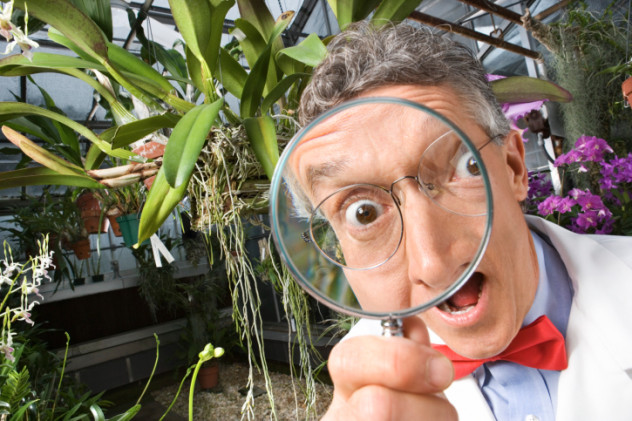
As a means of locomotion, flight requires a complex design (low body weight, but a sturdy frame) and a lot of effort by powerful wing muscles. The first creature capable of flight was actually the oldest known insect, Rhyniognatha hirsti. The tiny insect lived some 400 million years ago, meaning that flight is by no means a recent development from an evolutionary perspective.
Rhyniognatha hirsti was discovered in 1928, in rocks dating back to the Devonian. The fossil was promptly ignored for almost 75 years, until biologist Michael Engel accidentally rediscovered it in a drawer in London’s Natural History Museum. Engel gasped out loud on spotting the incredible specimen—and that was before he even knew how old it was.
Since then, experts have studied its remains thoroughly, confirming that the tiny insect had wings and was very likely capable of using them to fly. However, they are still not completely certain which family of insects it belonged to. Nevertheless, the fossil is a fascinating find and further study should reveal more about the earliest known pioneer of flight.
5The First Flowering Plants
Potomacapnos And Amborella

People tend to associate plants with flowers, but flowers are actually a very recent development, at least on the evolutionary timescale. Before they showed up, plants reproduced via spores for hundreds of millions of years. In fact, scientists aren’t even sure why flowers evolved in the first place, since they are delicate and require huge amounts of energy, which many plants might put to better use growing seeds or increasing in height. Additionally, non-flowering plants have nothing that really corresponds to flowers, making it something of a puzzle where they came from in the first place. These loose ends led Darwin to famously describe the rise of flowers as “an abominable mystery.”
The oldest known flowering plant fossils date to the Cretaceous, between 115 and 125 million years ago. Among the oldest is Potomacapnos, a surprisingly complex plant resembling a modern poppy. Such complexity in early fossils indicates that flowers probably evolved very rapidly to something approaching their modern form, rather than slowly developing over a lengthy period. But it’s hard to draw any firm conclusions, since flowers are fragile and rarely survive to be fossilized.
However, some answers might lie with a rare shrub found only on the Pacific island of New Caledonia. Amborella trichopoda (pictured) is the only surviving member of the Amborellales. At the start of the Cretaceous, the Amborellales split from the non-flowering plants dominating the landscape, becoming the oldest order of flowering plants to survive into the present. Later, two other surviving orders emerged: the Nymphaeales, which became modern water lilies, and the Austrobaileyales, from which all other flowering plants developed. Since the Amborellales emerged first, Amborella trichopoda remains closest to the original flowering plants. By comparing it with the Austrobaileyales, we can get some idea of which traits flowering plants originally boasted and which simply evolved further down the line.
4The Earliest Mammal
Hadrocodium Wui
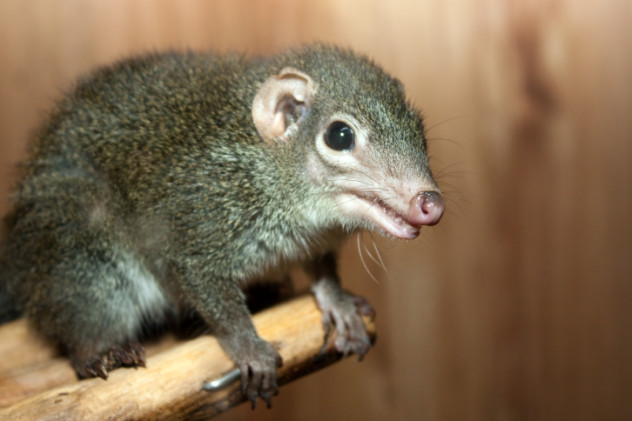
The oldest known mammal resembled a small mouse or modern-day shrew. Hadrocodium wui, identified in China in 2001, was some 3.5 centimeters (1.4 in) long, weighed 2 grams, and probably had a lifestyle and diet similar to modern shrews, since its teeth consisted of specialized fangs for chopping up insects.
So how do we know that Hadrocodium was a mammal and not a therapsid (a type of mammal-like reptile that flourished in the Mesozoic)? Well, as well as a notably large brain for its size, Hadrocodium boasted middle-ear bones separate from its jaw, which is considered a notable point of evolutionary divergence between mammals and reptiles. In fact, Hadrocodium could be considered quite modern in its design, especially when it comes to its sense of smell.
However, what makes Hadrocodium wui truly impressive is its age. At 195 million years old, Hadrocodium lived long before some of the best-known dinosaurs, including the stegosaurus, diplodocus, and tyrannosaurus. In fact, the mighty tyrannosaurus lived closer to us in time than it did to Hadrocodium wui.
3The First Tree
Wattieza
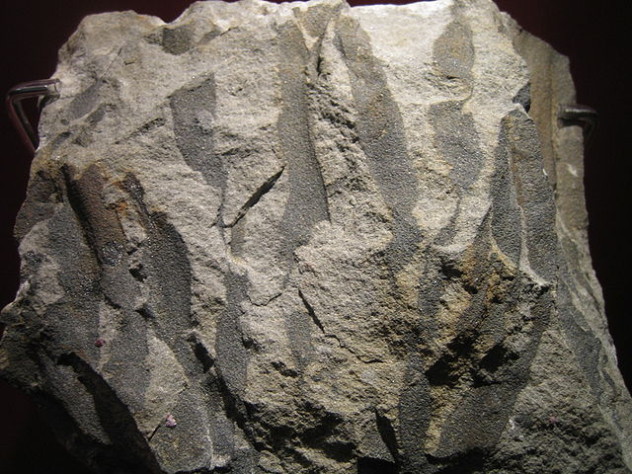
Trees played (and still play) a crucial role in the formation of the Earth’s atmosphere. Without their power to convert carbon dioxide into oxygen, the planet would quickly become inhospitable to life, at least as we know it. In fact, the first forests drastically changed our ecosystem, causing the planet to cool and directly creating the conditions we take for granted today. As such, the appearance of the tree can be considered one of the most important evolutionary breakthroughs of all time.
Currently, the oldest known tree is a 397-million-year-old species known as Wattieza, which resembled a modern palm and probably reached a height of around 10 meters (30 ft). Wattieza preceded the dinosaurs by some 140 million years, spreading across the planet long before the first vertebrates took to the land. It reproduced using spores, similar to those used by ferns and fungi today. The species is currently extinct, but a 180-kilogram (400 lb) fossil (pictured above) was discovered in New York in 2004, solving many unanswered questions about how forests came to dominate the land.
2The Earliest True Dinosaur
Nyasasaurus Parringtoni
The reign of the dinosaurs began after the dreadful Permian extinction, which took place some 250 million years ago and wiped out around 90 percent of all species on Earth, including 95 percent of marine life and most of the planet’s trees. Afterward, the dinosaurs emerged.
The oldest true dinosaur currently known is Nyasasaurus parringtoni, which was discovered in Tanzania in the 1930s, but only conclusively dated in 2011. Only a few bones from the species have been identified so far—scientists still have no clue whether it was a carnivore or a herbivore, nor are they completely certain whether it walked on two legs or not.
Nevertheless, we can say that Nyasasaurus parringtoni was less-than-imposing, standing just 1 meter (3 ft) tall and weighing 18–60 kilograms (40–135 lb). In fact, it’s barely even a dinosaur by most standards, but analysis of its bones has revealed that it was a fast-growing animal, indicating that it was warm-blooded, an essential trait of dinosaurs. For now, the scientific community hopes to discover more fossils, since we haven’t even been able to identify the family of dinosaurs it belongs to yet.
1The Oldest Life-Form

What is the oldest life-form known to science? Well, it’s a surprisingly tricky question to answer, since early life-forms were so basic its often hard to identify them accurately. For example, rocks discovered near Pilbara in Australia were initially thought to contain traces of a purple, ocean-dwelling microbial community almost 3.5 billion years old. This would have been the oldest evidence of life on Earth and everyone got very excited—until earlier this year, when new testing conclusively proved that the “microfossils” were actually just strangely shaped mineral deposits created by hydrothermal events. In other words, they were never alive at all.
The same thing happened in South Africa, where tiny tubes found in rocks were taken as evidence of 3.4-billion-year-old bacteria, only for a subsequent study to identify them as natural formations created by volcanic activity. Fortunately, these revelations haven’t set the hunt for the oldest fossil back too far, since Australia’s Strelley Pool Formation contains carbon-rich “bag-shaped bodies” that are considered to be convincing evidence of ancient microbial life. At 3.43 billion years old, the Strelley Pool deposits are only about 20 million years younger than the Pilbara “microfossils” were thought to be.
Intriguingly, there’s some evidence that the Strelley Pool organisms were photosynthetic, surviving by converting light to energy. Although no fossil record of them has been found, it’s generally agreed that the earliest bacteria were rock-eaters known as chemolithotrophs, with photosynthetic bacteria emerging later. So we can be pretty sure that the earliest bacteria predate even the Strelley Pool deposits by a long, long time.
Kyle believes that it’s a sin to be oblivious and ignorant to the great mysteries of our planet and the universe. Also, he believes that most modern jobs are tedious and boring. If this sounds like your cup of tea, check out his new website: therantbasket.com.



